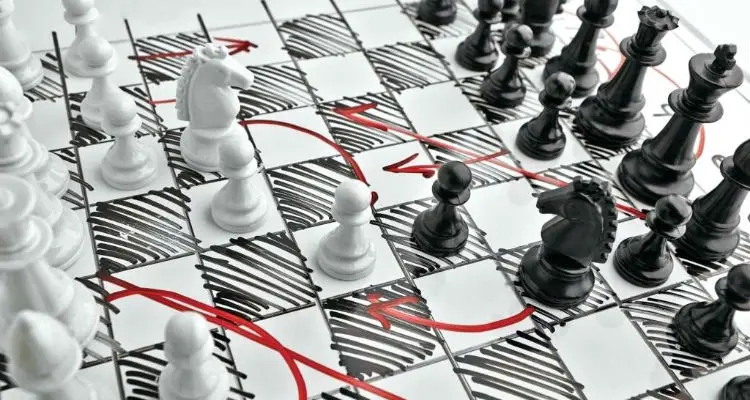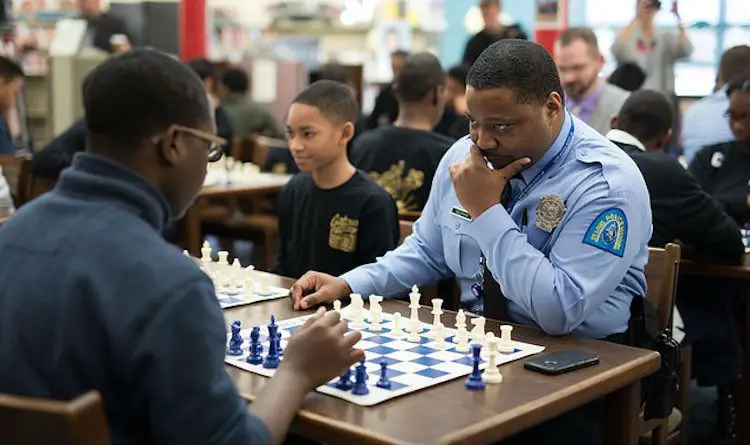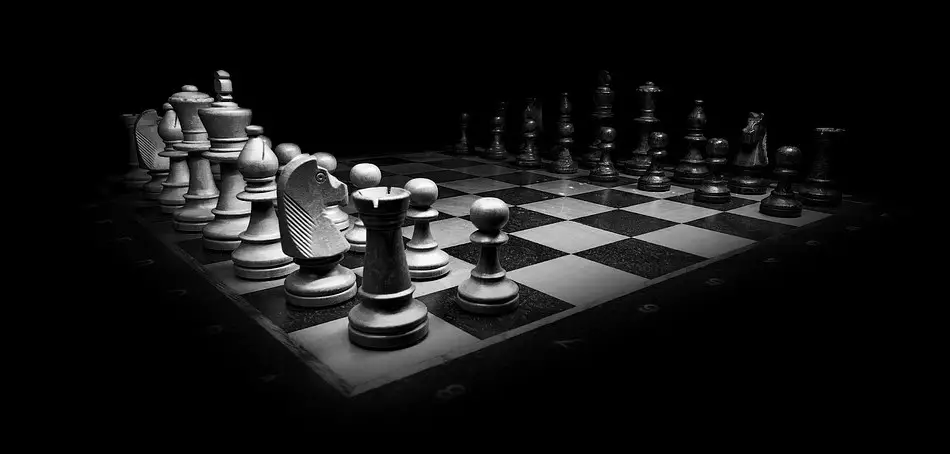
How Chess and Math are Related… and How They are Not.

Chess and Math: Will I Be a Better Chess Player if I Know Math Better?
Chess is a game that can trace its origins back as far as the 6th century with the game as we know it beginning in the 13th century. Math goes even further back than that. There are examples of Math problems involving arithmetic, algebra, and geometry from 3000 BC. Chess and math are two things that each go back thousands of years but do they have any relation? Here we will examine the relationship between the two subjects and look at whether a better understanding of math will make you a better chess player.
General Connections Between Chess and Math
Math and chess have many connections in the way you have to think about each. They both require high order thinking, patience, planning, following rules and learning from mistakes. However, chess is not necessarily like blackjack where the game itself is inherently one big math problem. So, can knowing math better make you a better chess player?
Math and Chess Study
To answer that question, we can start by looking at a study done by researchers in Denmark called, “Your move: The effect of chess on mathematics test scores”. In this study, the researchers looked at the question the other way around asking, will learning chess help you better learn math? They replaced math lessons for students in Grades 1 – 3 with chess lessons and looked at the results. What they found is that chess lessons WILL help improve math scores as well as reduce boredom and unhappiness with math classes.
Specifically, they found that chess, “works with concepts as correlation, it uses the coordinate system, geometric concepts such as rows and columns (called ranks and files in chess), diagonals and orthogonal, and it requires continuous calculation. It also develops visual memory, attention span (concentration), spatial reasoning skills, the capacity to predict and anticipate consequences, critical thinking, self-confidence, self-respect, and problem-solving skills”.

Chess lessons will help improve math scores as well as reduce boredom and unhappiness with math classes.
Transfer of Abilities Between Chess and Math
There is a concept called transfer of abilities that states that the skills you pick up in one area of practice or study can be easily transferred to another. You see this concept applied a lot recently as one of the big reasons that young athletes should play more than one sport and not specialize until they get older. The reason for this is that the skills picked up in one sport will transfer to another and increase the rate at which players develop. For example, when you learn to box a defender out for a rebound in basketball it can help you to know how to get a better position on a player while going for a header in soccer.
There are varying thoughts on how much transfer of abilities there is between math and chess. On the one hand, math and the game of chess are more dissimilar than similar as far as the mechanics of each go. This would tend to say that there is not a lot of transfer between the two. On the other hand, to do both you must have many of the same general cognitive abilities. This implies that there, “may be a transfer of non-specific knowledge (i.e. problem-solving and flexible thinking)”. This is the big finding of the study, that the thinking behind both is similar enough that developing in one field can help you in the other.
Specific Mathematics Disciplines in Chess
There are some mathematical concepts that can help in the game of chess though, specifically, ones that come from geometry. There is the “rule of the square” which is a geometric concept that helps a player look moves ahead and understand what a piece can accomplish further into the game. There is also the “rule of Bahr”. This is a concept involving diagonal lines intersecting and again, helps players see the consequences of positioning and moves down the line.
Math and Computer Chess
Since the dawn of computers, the people who create and design those computers have looked for ways to program human-like thinking into the machines. One very famous way they have tried to do this is by creating computers that can play games against humans and chess has always been one of the preferred showcase games.
The most famous of these is IBM’s Deep Blue, which played World Champion Garry Kasparov in 1996 and 1997. In the first match, it took 2 games but Kasparov ultimately prevailed 4-2. In the rematch, the upgraded Deep Blue (sometimes known as Deeper Blue) won in a 3 ½ – 2 ½ victory. This computer used what is called an “exhaustive search” algorithm to calculate the many possible moves and outcomes on a chess board. As the math behind artificial intelligence has gotten more sophisticated the next generation of chess-playing machines such as Houdini, Rybka, Deep Fritz, and Deep Junior has become much faster and more efficient.

Garry Kasparov vs Deep Blue
Here again, we see that with improved math, there is improvement around the edges but not necessarily with the strategy of chess. When Deep Fritz played world champion Vladimir Kramnik in 2006 it was able to evaluate 8 million positions per second! However, even with all that calculating power, it was still only able to beat Kramnik by a score of 4-2
Conclusion
Will a better understanding of math make you better at chess? The answer is probably yes, but not necessarily in the way you might think. Memorizing Pythagorean theorem or a certain algorithm will not automatically allow you to beat a chess Grandmaster or take down Deep Blue. What will happen though is that developing and improving the skills that it takes to be good at math will train your brain in a way that will allow you to transfer many of your math skills to the game of chess. So, next time you can’t find a friend for a good game of chess, pick up a Sudoku or balance your checkbook, it will help you next time you are going for checkmate!
Discover more from reviewer4you.com
Subscribe to get the latest posts to your email.





